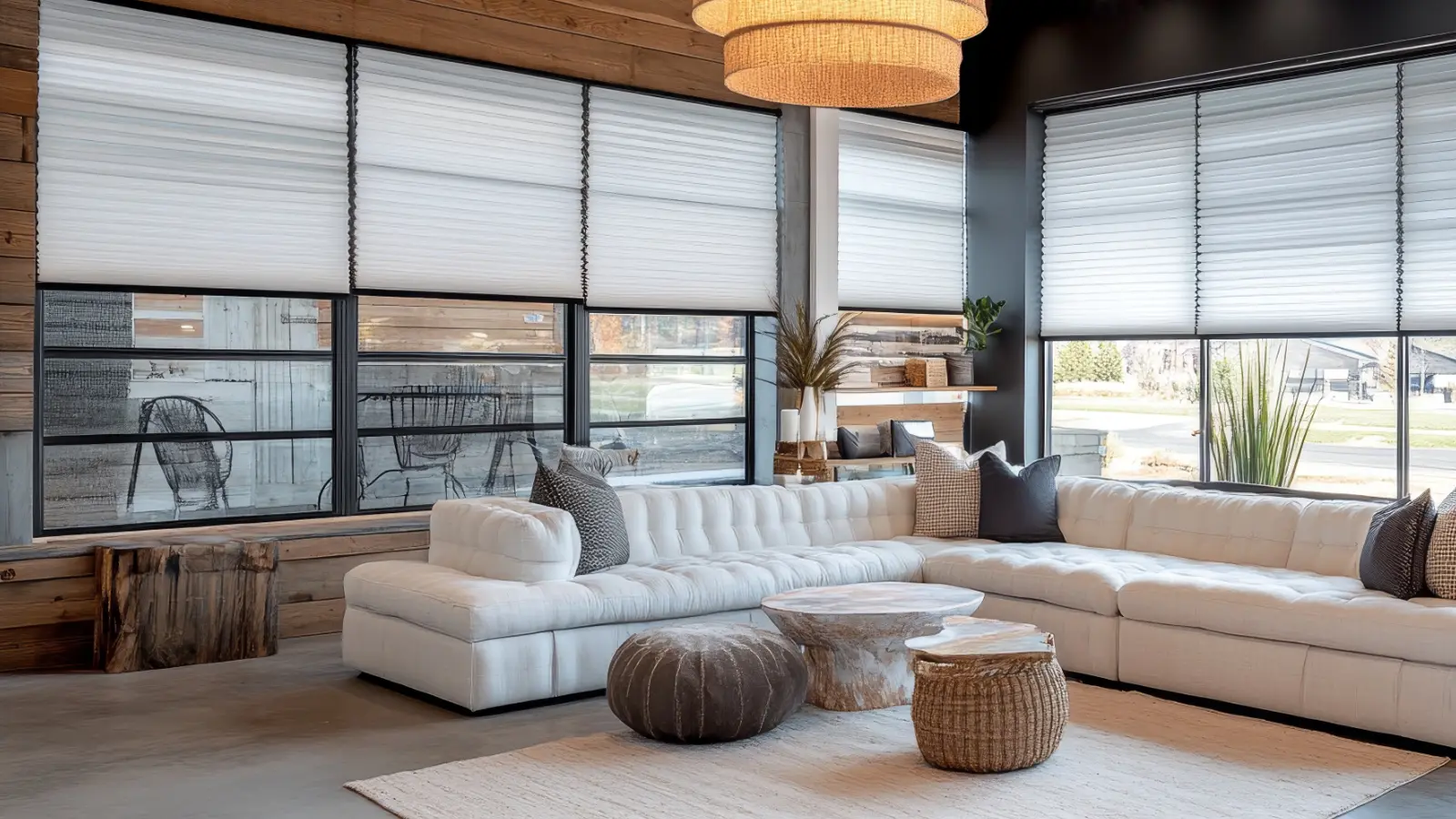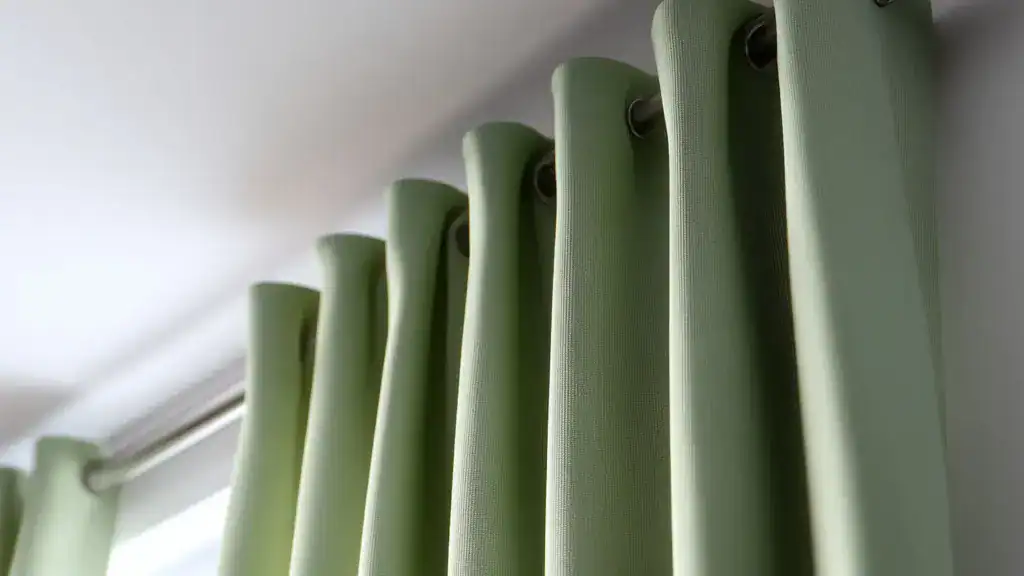Choosing the Best Cellular Shades for Insulation & Privacy

With their sharp pleated folds and angular lines, cellular shades are a natural fit in modern homes. They don’t compete with minimalist decor — they enhance it. They don’t overpower your furnishings — they complement them.
They’re as practical as they are striking. Aside from heavy drapes, perhaps no other window treatment does a better job of insulating against heat transfer through your windows — and would you want old-fashioned heavy drapes in your contemporary living room?
Cellular shades are so effective at saving energy that they’ll qualify you for a federal tax credit!
But some cellular shades do a better job than others, depending on fabric, cell design, and other factors we’ll explore in this blog.
What Makes Cellular Shades Different?
Cellular shades are designed with energy efficiency in mind. Unlike regular shades or blinds, they have a unique honeycomb structure that traps air between the window and your room. The trapped air acts as a barrier between the inside of your home and the outdoors, like an extra layer of insulation.
Why Are Cellular Shades So Popular?
- Their honeycomb design traps air, reducing heat loss in winter and heat gain in summer.
- They lower your heating and cooling bills.
- They block harmful UV rays and protect your furniture from fading.
- They offer excellent privacy without sacrificing light.
- They’re highly customizable and come in various styles, colors, and light-filtering options.
Honeycomb Shades vs. Cellular Shades
You may have heard these two terms used interchangeably, but they refer to different types of shades. Honeycomb shades have a single layer of cells, while cellular shades can have multiple layers, as described above.
Both offer insulation and privacy benefits, but cellular shades are more energy-efficient due to their additional layers.
What to Look for in Your Cellular Shades
When it comes to choosing the best cellular shades for insulation and privacy, these are the factors to consider:
1. Cell Size
Cellular shades can have single, double, or even triple layers of cells, each offering a different level of insulation.
- Single-cell shades have only one layer of cells, making them thinner and less insulating. They’re perfect if you live in a milder climate.
- Double-cell shades feature two layers of cells stacked on top of each other for better insulation. They’re a good choice in areas with more temperature extremes.
- Triple-cell shades provide the ultimate in insulation. If your home has drafty windows, or you experience brutal winters and scorching summers, these are the cellular shades for you.
2. Fabric
- Light-filtering fabric allows natural light to enter your home while still providing privacy.
- Room-darkening fabric blocks most sunlight and is often used for bedrooms or media rooms.
- Blackout fabric blocks 99% of incoming light, creating near-total darkness in a room. It’s an excellent choice if you want to sleep during the day or have sensitive electronics that need protection from sunlight.
3. Cell Shape
The shape of the cells can also affect insulation and privacy levels.
- Hexagon-shaped cells are more efficient at trapping air than square-shaped cells.
- Arch-shaped cells are best for covering arched, circular, and other specialty-shaped windows.
4. R-Value
R-value is a measure of a material’s resistance to heat flow. The higher the R-value, the better it insulates.
- Cellular shades with more layers and denser fabrics usually have a higher R-value.
- Look for shades with an R-value of at least 4 for effective insulation.
5: Mounting Style
Believe it or not, where you mount your shades makes a difference in their insulating ability.
- Inside mount is the more common option and offers a cleaner look. However, gaps between the shade and window frame can let in drafts.
- Outside mount covers the entire window frame, providing better insulation. Choose this option if your windows aren’t perfectly square or you’re dealing with significant drafts.
5. Top-Down Bottom-Up Feature
- This feature lets you raise the shade from the bottom or lower it from the top, giving you more control over privacy and light.
- It’s a popular option for bedrooms and bathrooms where you want natural light but still need privacy.
Additional Tips
- Mount your cellular shades as close to the window frame as possible to minimize heat transfer around the edges.
- Consider layering your cellular shades with curtains or drapes for even more insulation and privacy control.
- Regularly clean your cellular shades to maintain their efficiency and prolong their lifespan.
FAQs: Choosing Cellular Shades for Insulation & Privacy
Q: What’s the difference between single-cell and double-cell shades?
Single-cell shades have just one layer of honeycombs, while double-cell shades have two. Double-cell shades offer better insulation and are more effective at blocking heat and cold.
Q: Can cellular shades block noise?
Yes, to some extent. Cellular shades can reduce outside noise, especially if you have double or triple-cell options. However, they won’t block noise as effectively as thick curtains or soundproof windows.
Q: Do cellular shades work with odd-shaped windows?
Cellular shades can be custom-made to fit oddly shaped windows, like arches or skylights. Contact a manufacturer offering custom solutions (like Aero Shade) for this.
Q: Can cellular shades be automated?
Many brands now carry motorized cellular shades controlled by a remote, app, or smart home systems like Alexa or Google Home.
Q: How do I clean cellular shades?
Use a vacuum cleaner with a brush attachment for regular dusting. A damp cloth with mild detergent can spot-clean stains. Always avoid saturating the fabric, and ensure the shades are completely dry before raising them.
Q: Are cellular shades child and pet-friendly?
Cellular shades are safe for homes with children and pets, especially if you choose cordless or motorized options. Cordless shades eliminate the risk of strangulation, making them a safer choice for family households.
Q: Do cellular shades offer UV protection?
Yes, depending on the fabric and color you choose. Light-filtering and blackout fabrics reduce UV rays entering your home.


